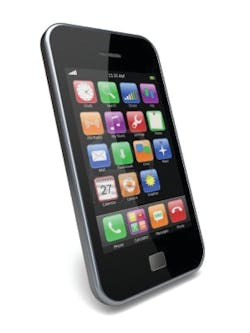Smartphone access control is well past the concept stage and every day more keypad, proximity reader and biometric based systems are being replaced by systems that use your smartphone as your credential. Why are people making the change? The answer is simple; because smartphone access control is convenient, less expensive and more secure than those older technologies.
Keypad systems can be pretty inexpensive; however they lack any sort of real security as PIN numbers are easily shared. Keypads also do not offer activity or audit trail information. Finally, you have to reach out and touch the keypad which is not only inconvenient, it is also unsanitary.
Proximity reader based systems offer higher security, especially if used in conjunction with a keypad, but they are still inconvenient and expensive. Managing cards or fobs for tenants, visitors and temporary workers can be an administrative nightmare and the cost of the cards adds up quickly. What’s worse, not all cards work with all readers so if you need access to multiple facilities, you will likely have to carry multiple cards, not very convenient.
Biometric readers offer a higher level of security as it is almost impossible to share but the devices can be very expensive, they are often stand-alone devices where you have to enroll people in each device which can be very inconvenient and most require you to touch them which is both inconvenient and unsanitary.
Alternatively, smartphone based access control systems are convenient, less expensive and more secure. They are convenient because you are already carrying your phone with you and you are far less likely to leave your phone behind than you are a proximity card. In fact, some have called smartphone access control the new biometric since they are permanently attached to the users hand, especially the under 40 crowd. Smartphone systems are also less expensive since you no longer have to deal with replacing cards and they are secure and can be protected with a PIN number so if the phone is lost, it can’t be used and since everyone has a sense of ownership of their phone, unlike their proximity card, they are far less likely to loan someone they phone to get into a building.
If you prefer something that is more convenient, less expensive and more secure smartphone access control is the right choice for you and the only decision you have to make is what type of smartphone access control to use. There are two technologies that can be used for smartphone access control, Bluetooth and NFC (Near Field Communication).
Bluetooth readers have a major convenience advantage and that is read range, they can work up to 30-feet away and the professional quality readers have the ability to adjust read range for each application. With a Bluetooth reader you can open a gate or garage without rolling down your window or open a door without taking your phone out of your pocket or purse. NFC readers only work from a few inches away forcing you to take your phone out of your pocket every time so they are really no more convenient than a proximity card.
Bluetooth readers also represent a lower overall cost of ownership than NFC readers as virtually every mobile phone already has Bluetooth and NFC is a new technology that is just being rolled out. It is expected that by 2016 not even 50 percent of the phones in use will have NFC on them so if you are select an NFC based system, you will likely have to purchase phone or NFC sleeves for your clients who don’t have the latest greatest phone.
Both Bluetooth and NFC readers are equally secure from hacking. There is an academic argument that Bluetooth readers are more open to a man-in-the-middle attack because of the read range which technically is true but it is unlikely that someone is going to spend tens of thousands of dollars in equipment and engineers to foil a $300 access control reader. Longer read range also offers a significant security advantage. With NFC readers you are forced to mount the readers on the unsecure side of the door where they are exposed to vandals, thieves and the elements. With Bluetooth readers, you can mount the readers on the secure side of the door, even put them out of sight behind a wall or in a ceiling where they are safe.
So if you haven’t started thinking about smartphone access control, it’s time to start.



